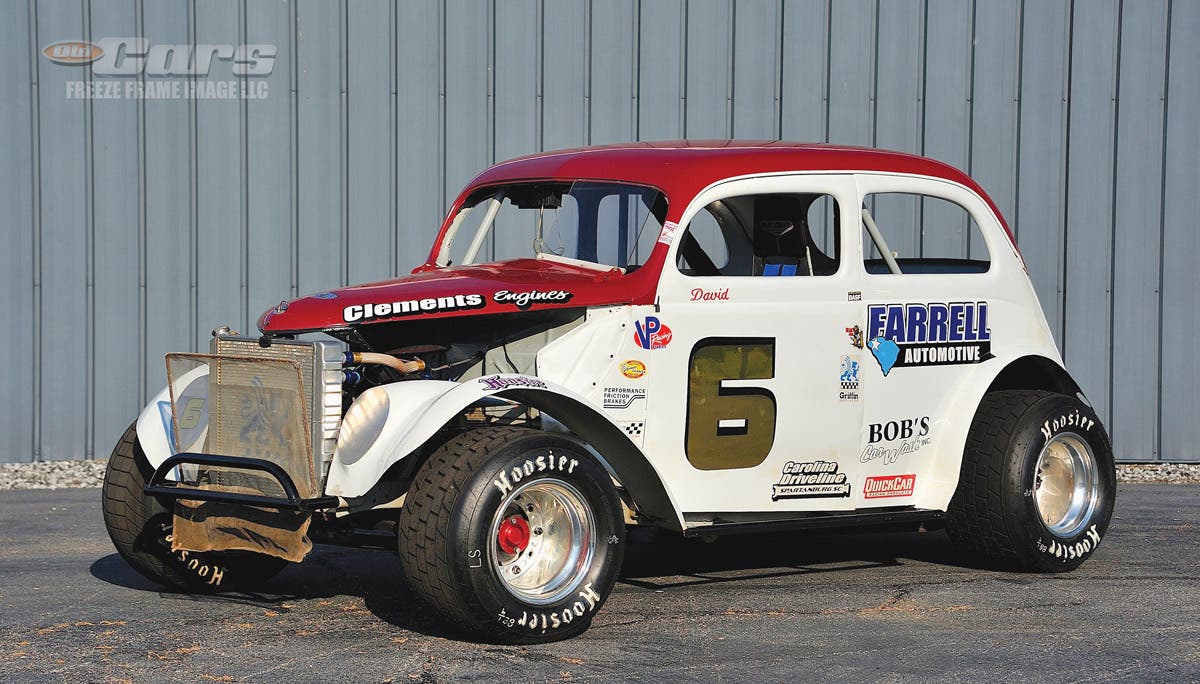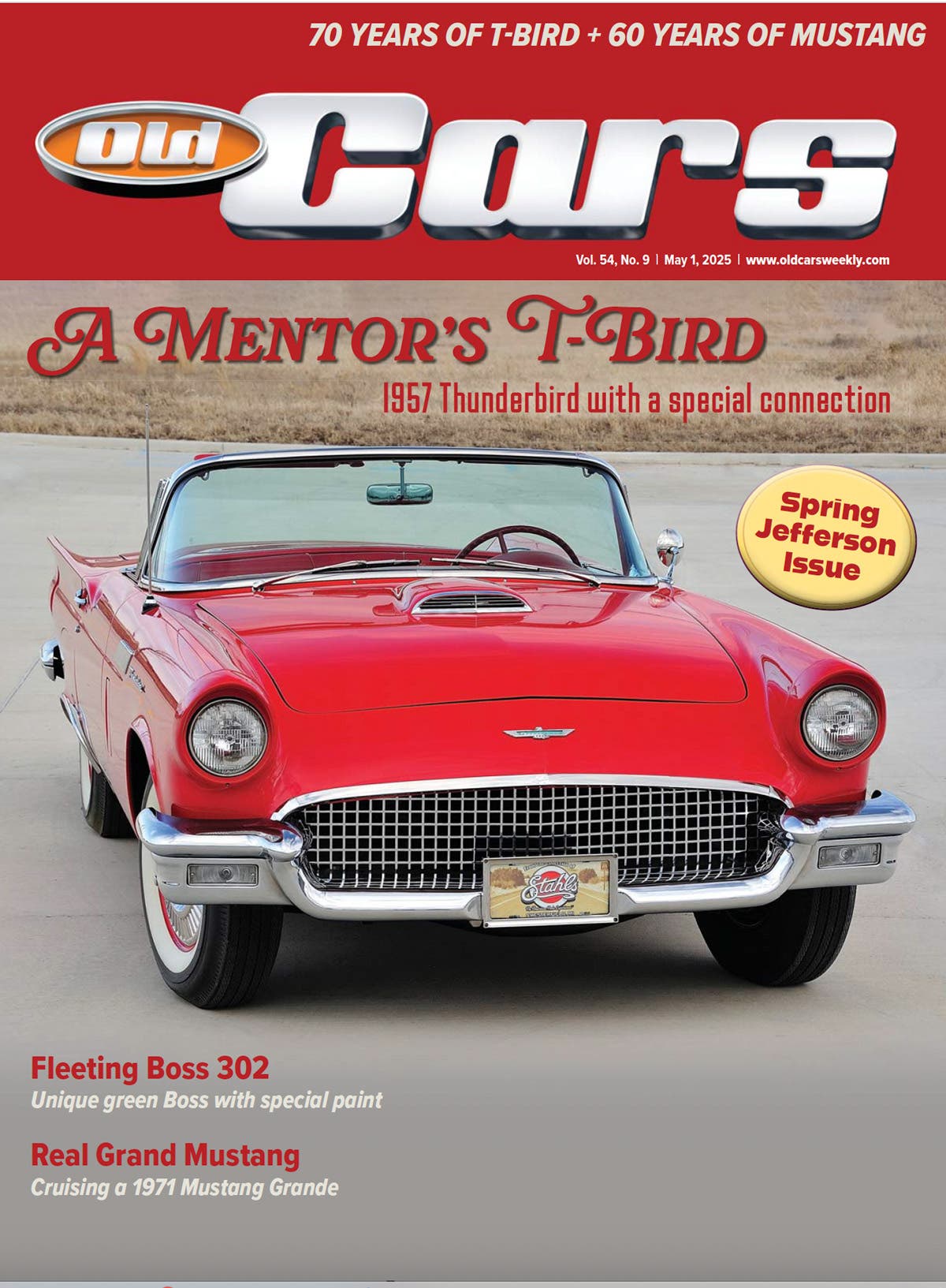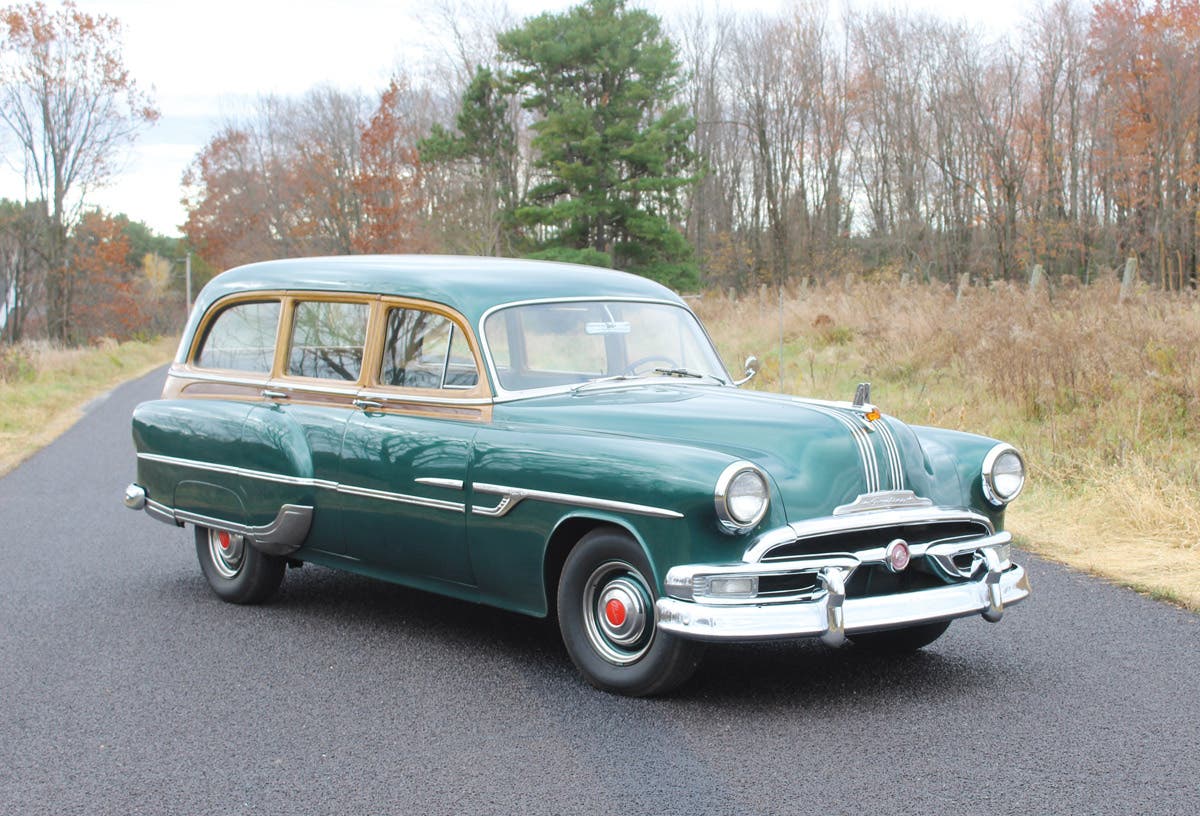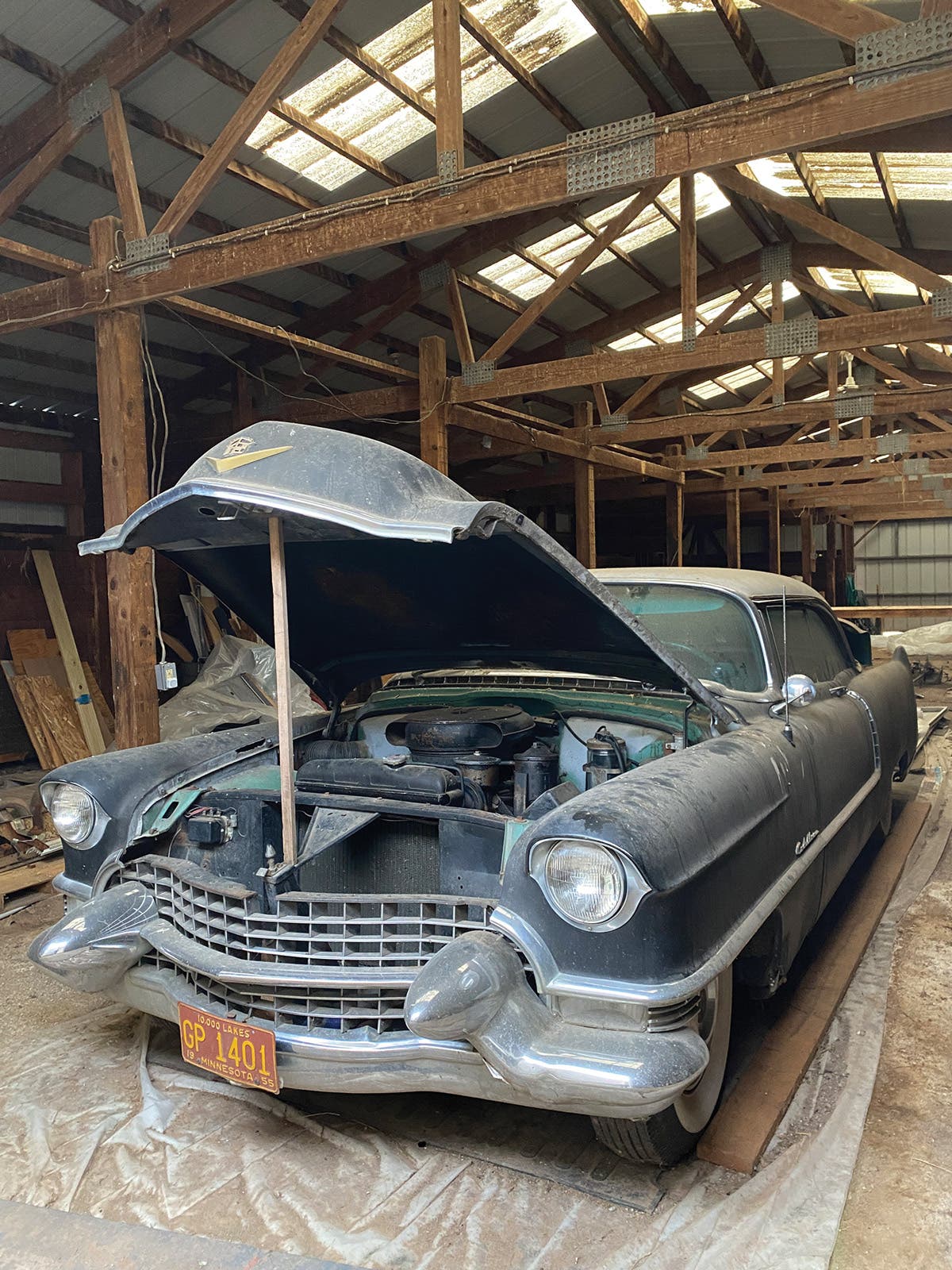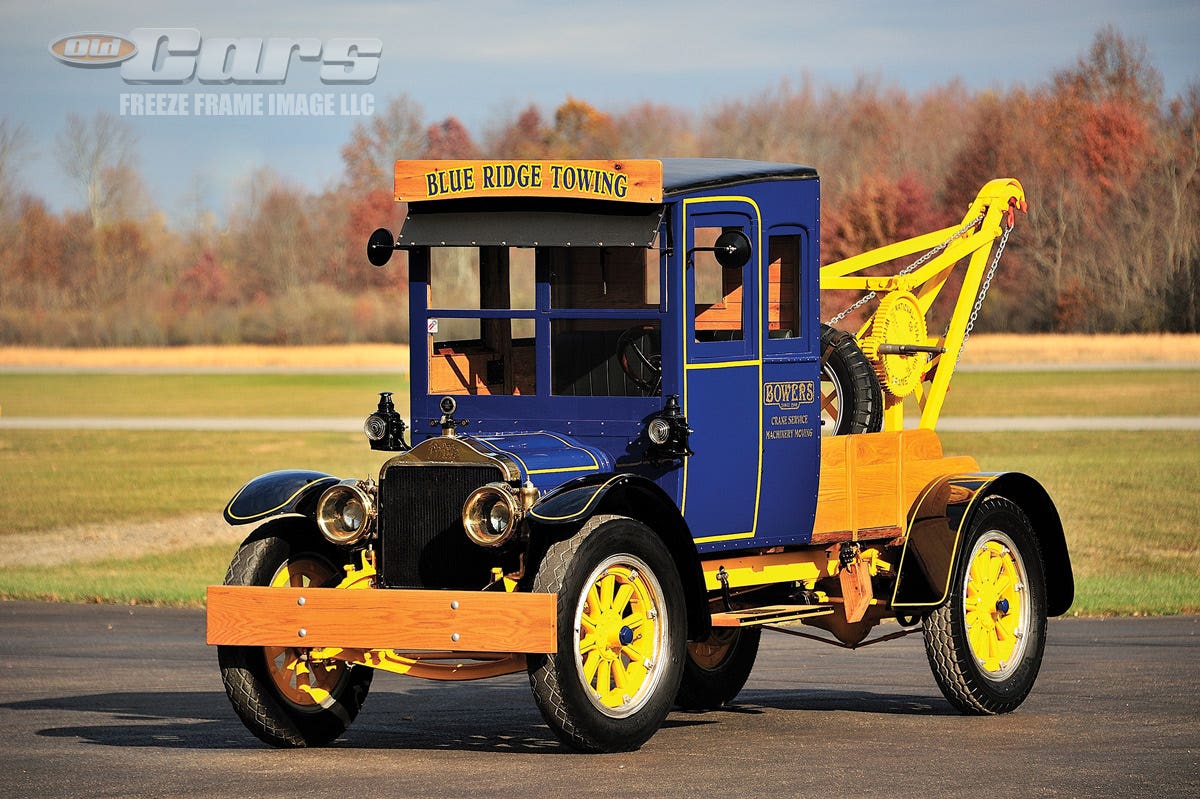Car of the Week: 1923 Ford Model T express pickup
Certainly one of R.C. Ayers’ coolest “toys” was the 1923 Ford Model T express pickup that has been in the family about 30 years. It wasn’t cool just because it was constructed so carefully and beautifully, and went on to become a prolific gatherer of AACA hardware.
By Brian Earnest
Ron Ayers’ father R.C. was big into toys. Really big into toys. So big that he had to open his own private museum, which doubled as a warehouse to store his many hundreds of pedal cars and all kinds of other play things.
Certainly one of R.C.’s coolest “toys” was the 1923 Ford Model T express pickup that has been in the family about 30 years. It wasn’t cool just because it was constructed so carefully and beautifully, and went on to become a prolific gatherer of AACA hardware. What really made the truck so great was that R.C. pretty much dreamed it up and built it himself, and there are almost certainly no other Model T haulers just like it.
Actually, there was another one that was very similar, and R.C. Ayers built that one, too.
“This was actually the second one he built,” Roy laughed. “When he made the first one he made a second set of wood pieces for it, to make a second one down the road. He did that kind of thing a lot of times — make a second set of something for down the road. Well, he sold that one and I don’t think he told Momma he was gonna sell it and she got mad. He said not to worry, because had everything he needed to build another one, and it was going to be nicer and it was gonna be yours and it’s never gonna be for sale.”
R.C. kept his word and finished the stunning Model T hauler in 1983 and it has been in the family ever since. R.C. was no stranger to restoring old cars, of course. He had been building and fixing cars since the 1950s and, in the 1970s, started Carolina Classic Cars, a collector car restoration, repair and sales business near Greenville, N.C. The business is now called Classic Cars of S.C. and is run by Ron, who still has his mother’s splendid open Model T truck in the company fleet.
Ronald Carl “R.C.”Ayers died in 2010, five years after his wife Mable’s passing, but Ron has not parted with the Model T truck yet. He’d like to find a new home for it in a collection somewhere. The family has sold off much of R.C.’s huge toy inventory, but the Model T truck and “40 or 50 pedal cars” have yet to find new homes.
“It’s a family car. It’s been in the family all these years, but I don’t have a sentimental attachment to it like my parents did,” Ayers admitted. “I’d like to find it a happy home in a nice collection somewhere or a museum somewhere. That would be absolutely wonderful — somewhere where other people can see it and enjoy it.”
Ayers remembers working on the Model T as his father was reconstructing the truck that he had owned earlier. The second time, he used fresh NOS parts that he had collected. Ayers isn’t sure where the engine and frame came from, but the rest of the truck was basically brand new.
“[It came from] just parts and pieces he had collected,” Ayers said. “All the sheet metal was new old stock. It was all brand-new pieces. Back then you could still find a lot of new old stock Model T sheet metal … We had been collecting cars since 1958, and he always had T models and A models … I’ve been in the business since early ’70s … but Daddy was always in hobby. He probably owned 300 or 400 cars as a hobbyist.
“All of us worked on it. I have two brothers and we all worked on it. It probably took a year, year and half to build it, just in his spare time on the weekend. We were restoring a couple other cars at the time.”
R.C. probably wasn’t intending to turn the truck into a show truck, but things sort of worked out that way. In its first show, the Model T was given an AACA Junior Award. “Then it got its Senior Award and then probably close to a dozen Preservation Awards after that,” Ayers said. “In 1985 it was invited to the Grand National Meet in Asheville, N.C., where it took a second-place award.”
There was very little chance the truck would ever meet up with another Model T that was configured identically because R.C. built the box from scratch using an old photo that he found. He didn’t have any blue prints or other plans to guide him, but being a carpenter and expert woodworker, R.C. only needed an idea and a photo. “He had a little photo that he used to build the wooden body by. He did the body himself,” Ayer said. “If my memory serves me, he found a pamphlet or something about a body builder, I believe from High Point, N.C. It was some little company that built depot hacks and express wagons and maybe a few other things … he had that picture and that’s what he went by. He could do a tremendous amount of stuff with a piece of wood, and he had a lot of common sense about how to do things.
“At the time he did that I don’t think he had any idea that it would be national first-place quality. It just happened to turn out that nice, but all the sheet metal was brand new old stock. All the fenders, hood, running board, radiator shell — all that stuff was new.”
Ayers said if his father wasn’t so particular about the way the custom wood body looked, the truck may have been the national champion. “Every time the truck got shown it got knocked for the paint. Those original bodies were supposed to be painted green,” Ayers laughed. “But Daddy said, ‘I’ll be damned if I’m gonna paint that beautiful wood green!’”
Ford already had 19 years of experience producing small commercial trucks by the time the 1923 Model T offerings came out. Ford did not begin making its own truck bodies until 1924. Until then, trucks could be built with bodies designed for a variety of purposes by a variety of body builders. Panel deliveries, canopy beds, closed cab delivers, open express pickups, closed express pickups, small buses, roadster pickups, delivery vans and paddy wagons were just a few of the designs made to fit the Model T and larger Model TT chassis. A total of 52,317 Model T truck chassis were built at the factory, each at a price of $235. The larger TT chassis cost $150 more and was a much more popular platform with 261,661 assemblies for the 1923 model year.
Under the hood of the Model T was the familiar L-head four-cylinder displacing 176.7 cubic inches and rated at 20 hp. The wheelbase measured 100 inches with 30 x 3-inch wooden artillery wheels in front and 30 x 3.5-inch wheels in back.
Running boards and fenders were included with the chassis, as were mageto headlamps and oil taillights. Electric starters were optional, and speedometers were no longer standard equipment. Ayers truck has neither.
R.C. cut, sanded and stained pieces of oak for the rear box, bed, tail gate, side boards, seat and dash. The gas tank is hidden under the seat, in its correct position. The battery is housed beneath a cover in the bed.
The two-piece windshield flips open if occupants of the truck would need even more of a breeze for some reason. Judging by how little the fabulous Ford has been driven, however, it’s unlikely that windshield has ever splattered a bug.
“It’s spent its whole life in the museum, really,” Ayer said. “I doubt that it’s got 15 miles on it today, from the time it was built. Just driving it on the show field, or around the yard or something. That’s about it.”
“Like I said, I don’t think he planned on making it an AACA winner and a show car, it just kind of turned out that way. It just so happened that it was that nice when he got done with it.”
For more on Ron Ayers’ Classic Cars of South Carolina, visit www.classiccarsofsc.com or call 866-572-1938.
________
Got a car you’d like us to feature as our “Car of the Week“? We want to hear from you! E-mail us and tell us all about it.
________



